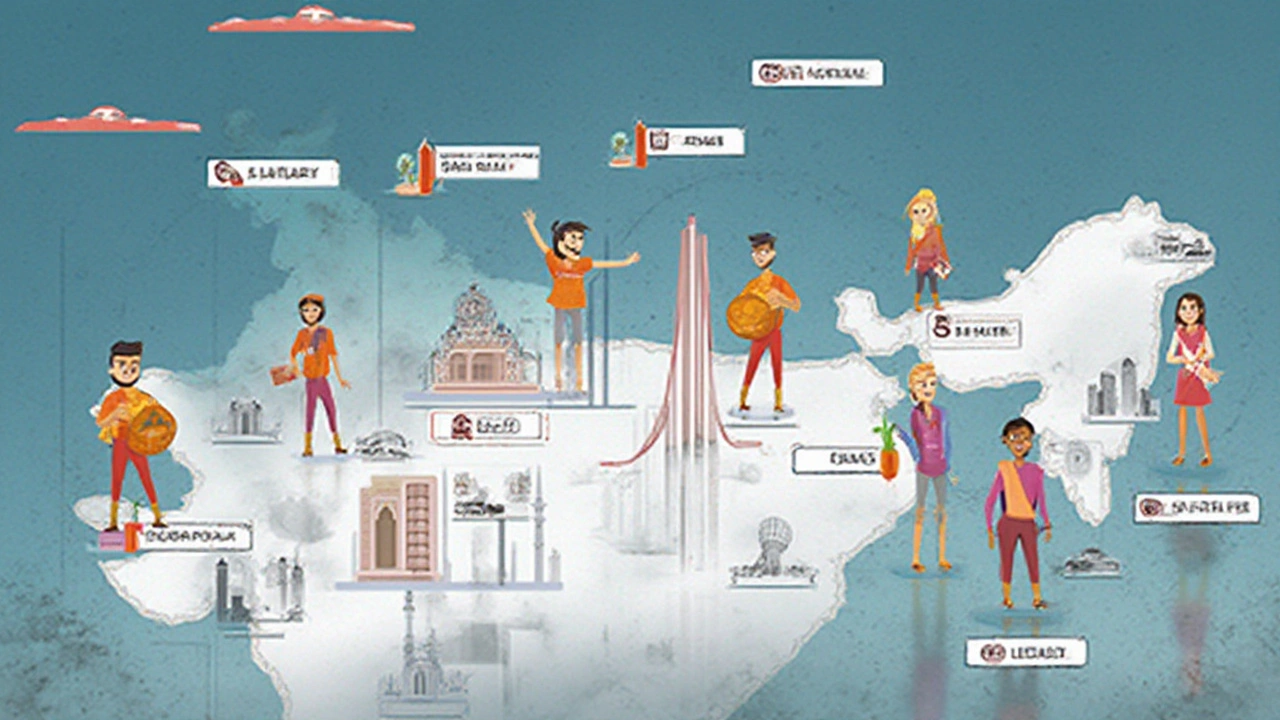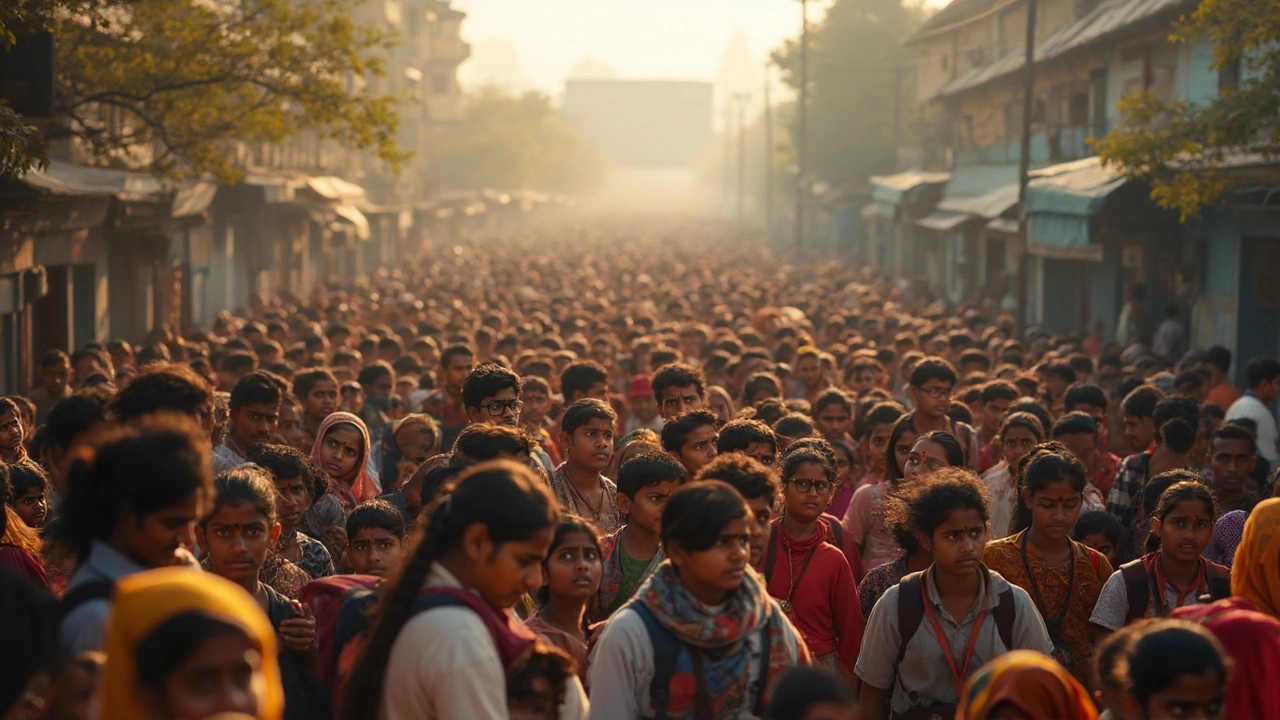You hear stories everywhere—tales of kids studying ten hours a day, relentless coaching, and nail-biting stress all just to get into the Indian Institutes of Technology (IITs). But out of all the IITs in India, which one truly sits at the top as the hardest to conquer? If you think it’s obvious, think again. The answer changes every year, shaped by trends, ranks, and wild competition shifts. So why do so many fight tooth and nail for that single letter in their JEE result: 'IIT'?
How IIT Admissions Work: More Than Just an Exam
Getting into an IIT starts long before you ever fill out an application. It begins with the Joint Entrance Examination (JEE) Main—think of it as the qualifying round—and then comes JEE Advanced, which is more of a mental marathon than just an exam. Not every student even gets through the first hurdle. If you land in the top 2,50,000 scorers in JEE Main (2025 cutoff included, by the way), you unlock the next stage: JEE Advanced. You’ll be surprised—less than 12% of candidates get this ticket every year. The pressure? Off the charts.
But the journey doesn’t end with a good score. Each IIT campus sets unique cutoffs for different branches (say, Computer Science or Electrical Engineering). Not just the brand, but the branch matters—a lot. Allotment happens through the JoSAA counseling process, which is completely seat-rank driven. Here’s one detail worth knowing: Even if you beat thousands of hopefuls, only 17,000 undergrad seats exist across all IITs as of 2024, according to Ministry of Education numbers. It’s tight, with more than 1.5 million test-takers each cycle. Talk about selective.
Each year, these things shift. For example, in 2023, major IITs saw closing ranks fluctuate because of new, high-paying tech trends. Students now chase Computer Science above everything—pushing cutoffs for that stream even higher, especially at the most coveted IITs like Bombay, Delhi, and Madras. The real story? The ‘hardest’ IIT to get into isn’t a fixed crown. It usually comes down to three: IIT Bombay, IIT Delhi, and IIT Madras. Trust the data—these three fight each other every year for the top slot.
For parents glued to WhatsApp groups or teens scanning Quora, the question often boils down to numbers. Let’s look at 2024’s cutoffs for the Computer Science stream (BTech), which is hands-down the most contested branch:
| IIT | Opening Rank | Closing Rank | Number of Seats (CSE) |
|---|---|---|---|
| IIT Bombay | 1 | 67 | 143 |
| IIT Delhi | 3 | 109 | 121 |
| IIT Madras | 28 | 175 | 58 |
| IIT Kanpur | 114 | 215 | 87 |
| IIT Kharagpur | 170 | 302 | 102 |
Notice something? Hardest IIT to get into by raw JEE Advanced rank is IIT Bombay, especially for Computer Science. The highest cutoff every year, decade after decade. To see ‘67’ as a closing rank with over 1.5 million test-takers puts things into perspective—less than 0.005% make the cut for that seat.
The Top Contenders: Why IIT Bombay Keeps Its Crown
What makes IIT Bombay the king of this castle? It isn’t just about Mumbai glitz, though that helps. The city buzz, top placements, legendary festivals—all add up. But the numbers speak clearest. In 2024, as per JoSAA data, the opening rank for Bombay’s coveted Computer Science branch was literally All-India Rank 1. It’s no fluke; this trend has held since at least 2018. Even for branches like Electrical or Mechanical, IIT Bombay’s cutoff usually lands among the three highest in the country.
Beyond the cutoffs, peer effect matters. Toppers want to be with other toppers. The 'brand value' is so entrenched that being in IIT Bombay is seen by many as the ultimate badge—even among those choosing between IITs and top Ivy Leagues. Stories float around on Reddit and alumni circles: students rejecting places at MIT or Stanford to stick to Bombay CSE. The sprawling, lake-side campus doesn’t hurt either.
Placements put the icing on the cake. In 2024, IIT Bombay’s Computer Science branch saw median offers touch Rs 2 crore (INR) per annum, as per campus figures. Domains like AI/ML, data engineering, and fintech lead this jump. Students don’t just get placed locally—their offers now span Singapore, the US, and Europe. This pushes the demand further, creating a feedback loop where every parent wishes for a ‘Bombay CSE’ seat for their kid. When supply is tiny and demand goes through the roof, the math is simple: the gates become nearly airtight.
IIT Delhi and Madras chase close behind, especially for students more inclined towards civil engineering, research, or work-life balance the southern city style. But Bombay’s magnetic pull for Computer Science keeps things the toughest. Recent trends show the newest IITs like Hyderabad or Gandhinagar, though improving fast, still can’t match the closing ranks or peer crowd at the old guard yet.
Not every branch is equally tough, though. If someone’s into Aerospace or Mining, the closing cutoffs see dramatic shifts. That means, depending on what you want to study, what feels like the ‘hardest IIT’ might actually be another campus or field. Yet, for that pure battle of raw scores, Bombay stays at the top.

Beyond the Ranks: What Shapes the Race Each Year?
Think the fight for seats never changes? Look again. Trends jump and flip faster than you’d expect in the IIT world. Back in 2000s, IIT Kanpur and Kharagpur sometimes matched Bombay in the elite branches for cutoffs. Then came the private tech boom, AI became hot, and suddenly demand for coding-centric branches rocketed.
The rise in girl applicants by 47% between 2015 and 2024—helped by supernumerary reserved seats—shook up the rankings. Now, you’ll see more female toppers in the upper echelons, especially in research domains. Plus, industry tie-ups with IIT Madras (like the Robert Bosch Center in AI) sometimes gave it a sudden ‘trend bump’ for a year or two. New IITs like Indore and Bhubaneswar fetch top JEE Advanced ranks for specific, cross-disciplinary programs (like Data Science with electrical engineering).
But some constants remain. Location matters. Proximity to metro cities, buzzing internship options, and richer alumni networks keep Bombay, Delhi, and Madras locked at the apex. Fees have been almost uniform since 2021, after the government capped undergrad tuition around Rs 2 lakhs a year. Scholarships and waivers exist for merit and financial need, but load is now more balanced than earlier decades.
The wild card? International expansion. More students apply for foreign internships or semester exchanges—from IIT Bombay to NTU Singapore or UC Berkeley. Institutes that facilitate these see a sharp, if temporary, rise in demand. Plus, quirky students might gun for an unusual IIT with a rare department, skipping the rat race for CSE altogether.
It’s not only about raw intelligence. Successful IITians talk about stamina, stress management, and, sometimes, luck in choosing the right question strategies. Even state quota changes (like for residents of Telangana or special EWS reservations) can tilt ranks one way or another. All in all, the hardest IIT may be mostly fixed, but how hard it gets really can ramp up or down with trends, placements, or policy moves each season.
Smart Tips: How to Aim for the Hardest IIT Seats
If your eye is on the toughest seat in the house—say, IIT Bombay CSE—having a smart plan matters. There are no shortcuts, but the most successful candidates often share a few common strategies:
- Use previous five years’ opening and closing ranks. Not just for IIT Bombay, but for all top IITs and branches. Sometimes, CSE Delhi closes at the same rank as Bombay’s Mechanical. Play the data.
- Crystal-clear concepts over cramming. Even in 2025, the biggest trap is the rote race. Ex-IITians mention that questions often twist basics in unpredictable ways. Don’t just memorize formulas—understand what’s under the hood.
- Stress simulation. Five or six full-length timed mock tests—under actual exam-day conditions—help condition nerves. The real enemy is panic, not lack of knowledge.
- Know the seat matrix inside out. JoSAA publishes seat changes, reservations, and gender-neutral/girl-only quotas. With only 143 CSE seats at Bombay and similar numbers elsewhere, knowing your odds matters.
- Don’t ignore the backup plan. If your rank lands just outside Bombay’s closing rank, consider Delhi or Madras—the next-hardest options, still global in their brand and placements. Even top new IITs for hot interdisciplinary programs can surprise you.
- Networking helps. Connect on forums like Pagalguy or Discord groups where past rankers hang out. They share tips nobody puts in guides—like the unspoken pressure of rounds in JoSAA counseling or last-minute branch switches.
Lastly, a pro tip from the trenches: Interview alumni, not just coaching teachers. Sometimes, a chat with a recent graduate busts decades of myths. You might realize a slightly lower-ranked IIT’s special program suits your dream better, or you find a trick for extra marks no one else knows.
The hardest IIT to get into might seem like a monster, but beneath all the drama, it is just a game of good preparation, real data, knowing what you want, and playing your cards right. If you keep it human, keep it real, and use your head, you might just find yourself opening that acceptance letter one day. Good luck hustling!

